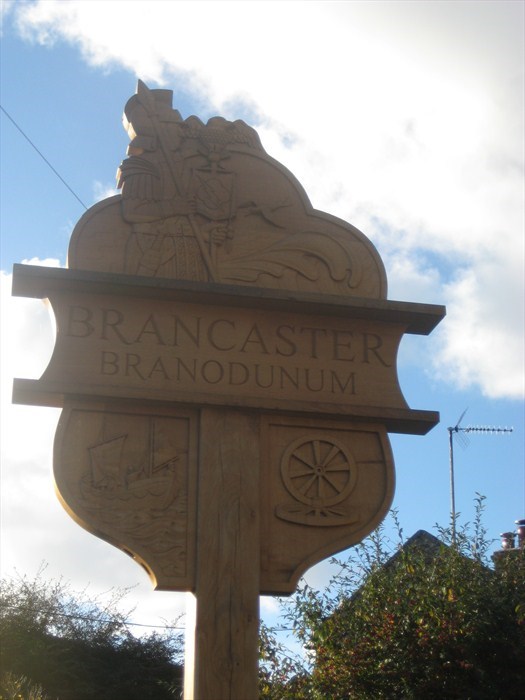If anybody would like to expand to this series please do. I would just ask that you let SmokeyPugs know first so they can keep track of the Village Sign numbers and names to avoid duplication.

A petrified forest can be seen on the foreshore near Brancaster at low tide. It is about three-quarters of a mile west of the golf clubhouse and consists of material similar to compacted peat or brown coal (lignite).
There was a Roman fort and settlement here named Branodunum to the east of the modern village. The Saxon Shore fort and accompanying civilian settlemen (much of which was destroyed during the construction of a locally opposed housing development in the 1970s) is not visible and remains mainly unexcavated.
The wreck that can be seen off the harbour is the 1021grt coaster SS Vina which was used for target practice by the RAF before accidentally sinking in 1944. The Vina was built at Leith by Ramage & Ferguson in 1894 and was registered at Grangemouth. She was a coast-hugging general cargo ship which would have worked the crossings between the east coast of England and through to the Baltic states. As she neared the end of her useful seagoing life in 1940, Vina was requisitioned as a naval vessel for wartime use as a blockship, carrying a crew of 12. With Great Yarmouth being a strategic port on the east coast, the ultimate fate for the ship would have been to have had her hold filled with concrete and explosives and she would have been sunk at the harbour mouth, blocking entry in the event of a Nazi invasion. Once this threat passed, she was taken out of blockship service and towed up the east coast towards Brancaster where she was used as a target for the RAF before the planned invasion of Normandy in 1944. Originally anchored further out to sea as a target for cannon shell trials, she dragged her anchor on 20 August 1944, in a north-westerly gale and ran ashore. Numerous efforts have been made to remove the wreck from the sandbank as the ship is not only a danger to navigation, but also attracts holiday makers who walk out to the vessel's remains at low tide. Various parts have been removed and, in 1968, her bronze propeller was blown off by salvagers and floated across the harbour channel. Removal efforts have long been abandoned as uneconomic. Lives have been lost due to ill-advised attempts to reach the Vina as it is on the far side of a fast-flowing tidal harbour channel. Local lifeboats and RAF rescue helicopters have been pressed into service on many occasions.
A warning sign on the wreck advises anyone reaching it to return to the beach immediately.